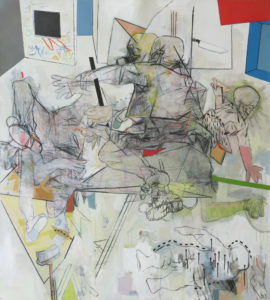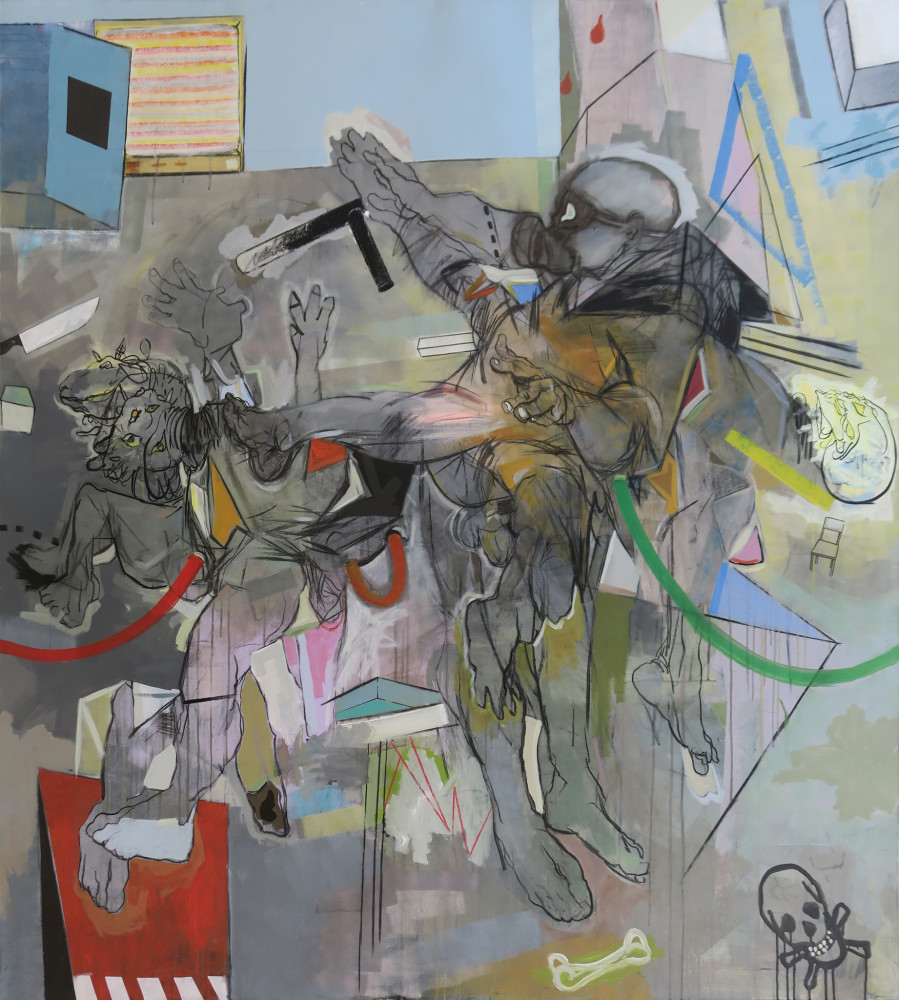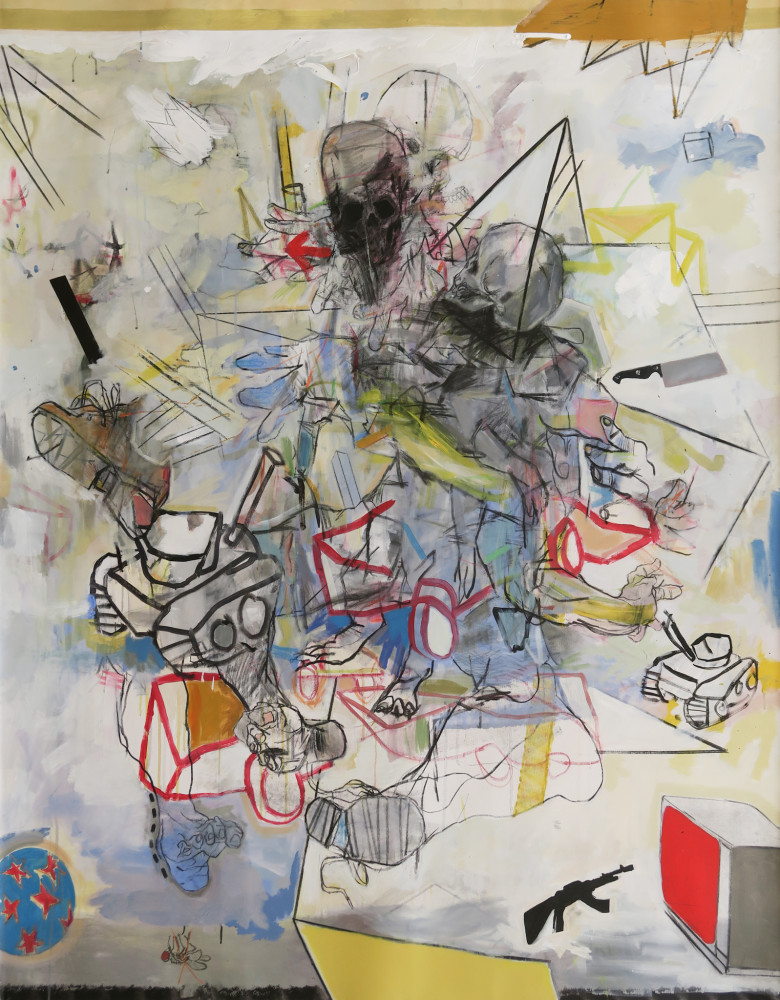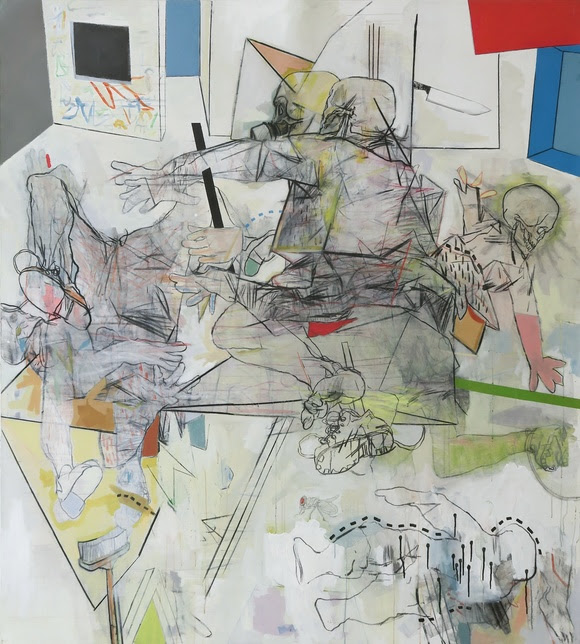
Thameur Mejri: 7 – 21 April, Jack Bell Gallery, London
Let me Savage, 2016.
About:
Born in 1982 in Tunis, Thameur Mejri lives and works in Nabeul, Tunisia. Since 2008, he’s completed his PhD in sciences and technology of arts while exhibiting in Tunisia and abroad. His latest solo shows “Male (God) scarecrow” in 2010 at Artyshow gallery and “Disaster pieces” in 2012 at Galerie Elmarsa as well as his participation in various group shows and international art fairs represented by Galerie Elmarsa – in Tunisia, the United States, Morocco, and Dubai- has launched his career as a new talent from the emerging scene in Tunisia. He currently studies at the Higher Institute of the Arts & Crafts in Kairouan.

Destroy the Source, 2016.
Mejri is a multidisciplinary artist focusing on a both conceptual and graphic approach. His areas of interest include video and cinema, and exploring the various possibilities of utilizing these media. One of his video works ”The plague”, produced in collaboration with his brother and film director Kays Mejri won in 2007 the Prize for the best experimental short film in the New York International Independent Film and Video Festival (NYIIFVF).

Before you split the ground, 2016.
Inspired by his short films, Mejri has created a new body of work, which incorporates three-dimensionality perhaps within a more static framework of the plain medium such as his new painterly collages on either Canson paper or canvas. The artist explores symbols as the defining attributes of power and authority over the body and its representation. Arrows, cutting threads and numbers are there to codify and suggest a specific ordering of the canvas that runs parallel to scissors, army helmets, microphones and police caps as the surveillance epitomes of Tunisia’s modern society. Thereby Mejri’s visual language is very much aligned to the digital and interactive paradigm emerging through technology today.
Thameur Mejri is a young visual artist. He completed his education at the Institute of Fine Arts in Tunis, majoring in painting. He held three solo exhibitions, one at Elmarsa gallery in 2012, in addition to participating in numerous exhibitions in Tunisia, the United States, Morocco, and Dubai. His areas of interest include video and cinema, and exploring the various possibilities of utilizing these media. He currently studies at the Higher Institute of the Arts & Crafts in Kairouan.
Thameur Mejri: The body is haunted by energies that we need to identify and discover. Sports are an aesthetic exercise that sculpts the body, while visual practices are exercises that sculpt the body and the painting alike. Any action has its internal reverberations; each line is loaded, pulsing with a violence that springs out of an internal latent energy. For this reason, visual art is a practice that seduces the latent psychological to contribute in producing the poetic cruelty. Therefore, we are faced with an approach that gives birth to poetry and violence out of the same womb.

Done, 2014.
The artist and the scalpel: The painting is a slaughterhouse. The painting is an area of conflict. The painting is an old tomb where we exhume whatever remains exist there. The painting is all those spaces where the body is at crisis. The human body is cleaved in a manner similar to how a child would take about his toys, spreading its parts all over the space. Disassembly is the main project in the architectural structure of work. It is similar to maps, islands, and diaspora that the artist stitches together, patching up the spaces in between.

2016.
The multi-handed Artist: the procedural methods vary between the conscious physical act and the spontaneous childish one, resulting in a multiplicity and overlapping of worlds in the painting. Action is variable, and practice is akin to a collection of roles that reveal a physical and intellectual involvement, where one moves in between smoothly and intentionally. Technique is knowledge, not only pure mechanics. Procedural methods are the theme and the child-like, improvised act hosting other actors dwelling in the artist’s being and memory. The artist goes back to his childhood, to his early beginnings to draw from.(text Elmarsa Gallery)
Exhibitions
